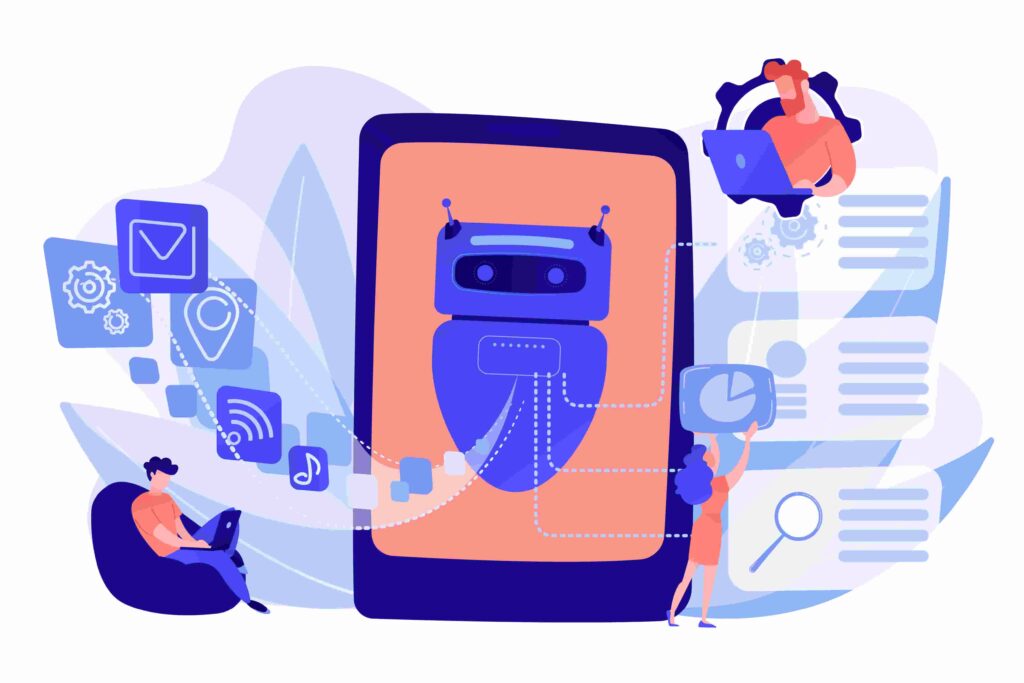Consumer behavior refers to the actions and habits that customers exhibit during the purchase journey for a product or service. These behaviors are influenced by every customer’s culture, society, specific needs, and age, among other factors. Understanding these aspects can help businesses provide better customer service.
This article will help you learn more about your consumers and habits, with tips to improve your customer service based on consumer behavior.
What is consumer behavior?
Consumer behavior is related to the actions and decisions of consumers when they choose, buy, use, and dispose of products and services.
Consumer behavior is defined as the way customers act during their purchase journey. It is shaped by a number of factors such as culture, social influences, consumer needs, and age.
The study of this behavior is multidisciplinary, involving fields such as psychology, sociology, economics, and anthropology. Philip Kotler, considered the “father of modern marketing,” emphasizes in his book “Marketing Management” that studying customer behavior is the key to optimizing and creating products and services.
In addition, knowing your customers better helps you set pricing and distribution policies and develop effective marketing and sales strategies and actions.
What is the relationship between consumer behavior and customer service?
Now that you know what consumer behavior is, you can understand its importance in the provision of effective and personalized customer service.
By understanding the buying patterns, preferences, and needs of your customers, you can adapt your strategies and improve your customer experience.
For example, if an organization realizes that its consumers value fast problem resolution, it can invest in training for its staff or use AI in customer service.
Therefore, understanding consumer behavior also boosts sales and business growth, considering that two thirds of consumers (82%) make purchasing decisions based on the quality of service they receive (according to CX 2022).
What factors influence consumer behavior?
There are several factors that influence consumer behavior, affecting consumer choices and preferences of products and services.
While there are numerous sources of information about consumer behavior, it is important to recognize that cultural traditions and customs directly influence consumer choices.
In other words, the way products and services are perceived and consumed is influenced by language, symbols, and cultural aspects. In addition, social expectations and the desire to belong play a role in shaping consumer choices.
All these factors lead customers to adopt products, brands, and lifestyles that are socially accepted. In addition, age, gender, education level, occupation, lifestyle, values, and personality directly influence customer preferences and purchase decisions, as well as personal factors such as their needs, desires, emotions, and beliefs.
Financial aspects also influence consumer behavior, involving both individual issues – such as personal budget, income level, and credit – and the broader economic context – including interest rates, inflation, and unemployment.
Opinions trends also influence consumer behavior, considering that recommendations and evaluations from other customers provide buyers with the confidence they need to complete a transaction.
In terms of trends, purchase decisions are based on the desire to acquire new products or brands in order to maintain a sense of contemporary relevance or to align with prevailing market preferences.
Read more: 5 ways to improve customer service – a guide for agents and managers
What is today’s consumer behavior?
After 2020, consumers have changed their habits due to the coronavirus pandemic.
According to data issued by Veja Insights based on a study by the EY Future Consumer Index, 54% of respondents have reduced their purchases to just the essential items.
Also, 62% of the respondents in the study say they visit physical stores less often and 52% are buying less frequently. In light of these findings, it can be concluded that consumers are increasingly demanding, short-termist, and digital, which requires a more robust technological infrastructure to serve them.
Therefore, the way an organization provides service is critical to attracting customers. To do this, you must invest in technologies that allow you to keep up with today’s consumer behavior, including omnichannel service, chatbots, and virtual assistants, not to mention analytical tools for real-time monitoring, which evaluate customer satisfaction.
How to understand consumer behavior?
An understanding of consumer behavior is crucial for effectively serving customers and building customer loyalty. So, in order to gain a competitive advantage, companies should invest in satisfaction surveys following the provision of services to obtain valuable insights.
Also, the provision of real-time feedback during the purchase process is another way to identify consumer preferences, patterns, and trends.
4 tips to improve customer service based on customer behavior
Improving customer service is critical to meeting the expectations and demands of modern consumers.
The following four tips will help you improve customer service based on today’s customer behavior patterns.
-
Identify and analyze customer contact channels
Keep your communication channels (website, social media, points of sale, email, telephone, WhatsApp, etc.) up to date and easily accessible. After all, this is how customers contact your organization.
Map, monitor, and update these channels to identify the ones that consumers use most frequently to interact. This way, you can customize strategies and improvements for each customer.
-
Cross-check data
By integrating CRM systems and social ads, you can analyze data about consumer behavior, gather information from different sources, and identify patterns in the buying journeys and profiles of every customer.
You can also invest in personalized reports that provide actionable insights into customer behavior and needs.
-
Conduct regular customer satisfaction surveys
Collect customer feedback by conducting a survey after every customer service interaction and at regular intervals in order to improve customer service. You can also use different types of satisfaction surveys to get a complete picture of your customer satisfaction.
Then, analyze the results of the surveys and implement corrective actions and continuous improvement based on the feedback you receive.
-
Focus on speed, quality, and personalization
Meet key customer expectations by providing fast, high-quality, and personalized service. Also, invest in continuous training for the customer service team to ensure prompt and exceptional service.
Use support technology, such as chatbots and AI, to speed up service and provide quick and accurate answers. Finally, collect and use customer data to personalize each interaction.
Also, establish service quality metrics and monitor them continuously to ensure standards are maintained.
Milvus helps you serve more customers with superior and rapid service, promoting customer loyalty
In addition to learning more about how to serve your customers well, adopt innovative strategies that map touchpoints, cross-check valuable data, implement regular customer satisfaction surveys, and focus on speed and personalization.
With Milvus, you serve more customers quickly and efficiently, promoting customer retention. Get ready to offer a high-quality service that exceeds customer expectations.
Start now and see the difference! Take your service to the next level with Milvus and build customer loyalty. Contact our experts today!







